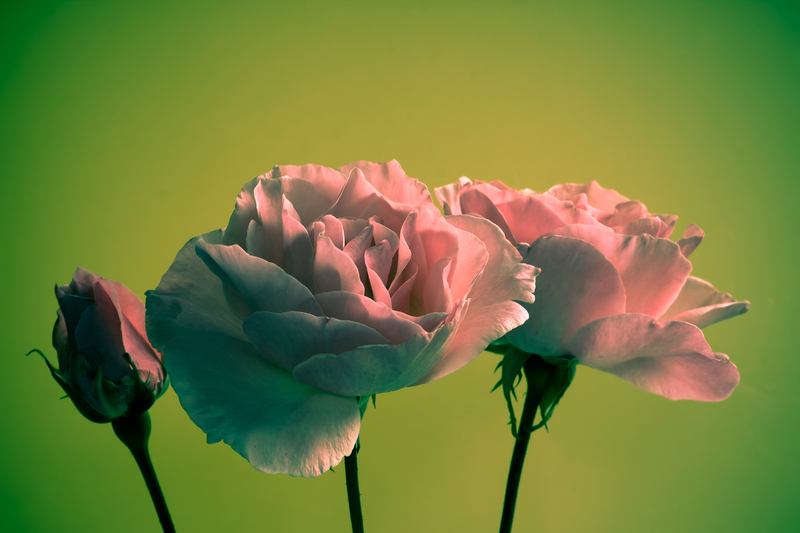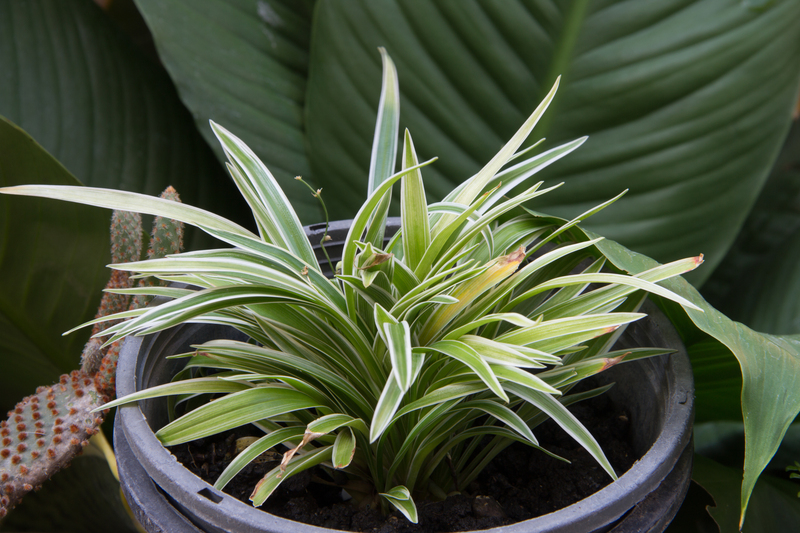The Art of Zen: Designing a Peaceful Garden Retreat
Posted on 16/09/2025
The Art of Zen: Designing a Peaceful Garden Retreat
In our fast-paced, technology-driven world, the serene allure of the Zen garden has never been more captivating. Designing a peaceful garden retreat inspired by Zen philosophy allows us to cultivate mindfulness and restoration in our daily lives. This comprehensive guide explores how to master the art of Zen in garden design, transforming your outdoor space into a sanctuary of calm and tranquil beauty.
What is a Zen Garden?
Zen gardens, also known as Karesansui or 'dry landscape gardens,' originated in ancient Japan. Their primary purpose is to evoke peace and contemplation, making them an ideal retreat for meditation and relaxation.
- Minimalism: Zen gardens prioritize simplicity, using rocks, gravel, and minimal vegetation to foster focus and clarity.
- Symbolism: Every element in a Zen garden has profound meaning, representing natural forces, landscapes, or spiritual concepts.
- Balance: The strategic placement of plants, stones, and water features conveys harmony and balance, core aspects of Zen philosophy.

The Core Elements of a Zen-Inspired Garden Retreat
To create a peaceful garden retreat that embodies Zen principles, focus on incorporating the following essential elements:
1. Stones and Rocks: The Bones of the Garden
Stones and rocks are fundamental features of any Zen garden. They represent mountains, islands, or other natural formations, providing structure and visual interest.
- Choose rocks with natural shapes and weathered textures.
- Arrange stones in thoughtful clusters or patterns to evoke landscapes.
- Large stones can serve as focal points, while smaller rocks suggest streams or pathways.
2. Sand or Gravel: The Flow of Water
Sand and gravel are used in Zen gardens to symbolize rivers, lakes, or the endless sea. These areas are carefully raked into rippling patterns, inviting mindfulness and reflecting the gentle movement of water.
- Select light-colored sand or fine gravel for maximum visual effect.
- Use a wooden rake to create lines and swirls, changing them as your mood shifts.
3. Plants: Subtle Accents of Green
Minimalist plantings add life to your Zen retreat without disrupting its tranquility. Stick to evergreen shrubs, moss, bamboo, or ferns, focusing on form and foliage over flowers.
- Prune plants regularly to maintain a simple, graceful appearance.
- Use moss to cover rocks or pathways for a lush, ancient feel.
4. Water Features: The Sound of Tranquility
While not always present, water elements--such as a small pond, bubbling fountain, or trickling stream--can heighten the sense of peace in your garden retreat.
- Choose water features that produce gentle, soothing sounds.
- Reflective ponds represent purity and invite contemplation.
5. Wooden and Stone Pathways
Carefully placed pathways guide visitors through the garden, encouraging reflection and slow movement. Use flat stepping stones, gravel, or wood to define these routes.
- Paths can wind around rocks or water features, enhancing the sense of journey.
- Avoid straight lines; embrace organic flow and gentle curves.
6. Ornaments and Features
Garden ornaments in the Zen tradition are refined and purposeful. Stone lanterns, small benches, or bamboo fences may be used sparingly to accentuate focal points.
- Opt for natural materials and simple, understated designs.
- Less is more--avoid cluttering your retreat with excessive decoration.
The Spiritual Essence: Mindfulness in Zen Garden Retreat Design
The heart of a peaceful Zen garden retreat lies in its invitation to experience the present moment. The deliberate arrangement of natural elements, empty spaces, and subtle transitions fosters a sense of calm. Here's how:
- Meditative Circulation: Curved paths without a fixed destination encourage slow, mindful walking.
- Shakkei (Borrowed Scenery): Frame distant views to blend your garden with its surroundings.
- Ma (Emptiness): Intentionally leave open spaces to create visual and mental release.
- Seasonal Change: Design your garden to evolve through the seasons, reminding us of impermanence.
Planning Your Zen-Inspired Garden Oasis
Every Zen retreat is unique. Use these steps as a blueprint for designing your own personal sanctuary, whether you have a sprawling backyard or a small urban courtyard.
1. Assessing Space and Setting Intentions
Begin with a quiet reflection on how you want to feel in your garden:
- Identify a quiet spot away from noise and distractions.
- Consider privacy--plant hedges or install bamboo screens if necessary.
- Sketch a rough plan, noting sunlight, wind, and views you want to emphasize or obscure.
- Define your purpose: meditation, reading, tea ceremonies, or simple contemplation.
2. Designing Layout and Flow
Respect the natural shape of your landscape. Map out key areas for sitting, walking, or viewing. Opt for asymmetrical layouts, as found in traditional Japanese gardens, for a more natural, serene effect.
- Place large rocks or water features first to anchor the design.
- Add pathways and stepping stones to connect areas.
- Layer plants and moss between stones to soften hard edges.
3. Choosing Materials and Plants
Select natural, sustainable materials that age gracefully. Avoid bright colors or artificial finishes. Plant choices should prioritize texture, shape, and year-round interest.
- Use bamboo, cedar, or granite for structural elements.
- Choose Japanese maples, mondo grass, azaleas, or pines for authentic greenery.
- Moss and ferns prosper in shaded, moist areas, enhancing your garden's tranquility.
4. Incorporating Water Wisely
If you add a water feature, place it where it can be seen and heard from key viewpoints. Even a small tabletop fountain can transform the atmosphere of your garden retreat. Be cautious with stagnant water--keep it clean and moving.
5. Lighting for Evening Peace
Discreet, low-voltage lighting can extend your enjoyment into the evening. Place warm lights along paths, near seating areas, or around focal stones to create a soft, inviting glow.
- Avoid harsh spotlights--subtlety is key to preserving the retreat's peaceful mood.
Design Tips for Small Urban Spaces
You don't need sprawling acres to enjoy the serenity of a Zen garden. With thoughtful design, even the smallest patio, balcony, or courtyard can serve as a peaceful Zen retreat.
- Container Zen Gardens: Use shallow trays with gravel, rocks, and miniature plants.
- Vertical Elements: Install bamboo screens or green walls to add privacy and lushness.
- Water Bowls: A simple bowl with floating flowers and pebbles can evoke tranquility in limited spaces.
- Portable Furniture: Choose foldable or minimalist benches to maximize flexibility and function.
Adapting Zen for Modern Lifestyles
Modern Zen retreat design harmonizes traditional elements with contemporary aesthetics. Clean lines, uncluttered arrangements, and thoughtful choices in materials bring Zen elegance to any garden style.
- Mix gravel with large-format concrete pavers for a modern twist.
- Combine sculptural plants with minimalist pots and planters.
Benefits of Creating a Zen Garden Retreat
Integrating a peaceful Zen garden retreat into your living space offers numerous physical and mental benefits:
- Stress Reduction: The tranquil surroundings help lower anxiety and promote relaxation.
- Enhanced Mindfulness: Mindful raking, pruning, and meditating in the garden fosters a present-focused mindset.
- Connection with Nature: Even in cities, Zen-inspired gardens provide an oasis of greenery and natural textures.
- Artistic Expression: Every design decision is an act of creativity and self-discovery.
Maintenance: Preserving the Peace
Maintaining a peaceful Zen garden retreat is as much a meditative practice as it is a chore. Regular care not only keeps your sanctuary beautiful, but also deepens your connection with nature.
- Rake gravel patterns and adjust stones periodically.
- Prune plants to maintain clean shapes and healthy growth.
- Sweep or rinse pathways, removing fallen leaves and debris.
- Clean water features and check for proper flow and clarity.
Inspiration: Traditional and Modern Zen Retreat Examples
The Ryoan-ji Temple (Kyoto, Japan)
This world-renowned Zen garden exemplifies simplicity, featuring 15 rocks set in a sea of raked white gravel. Its profound, minimalist design invites deep contemplation and demonstrates the art of Zen in garden design.
Contemporary Urban Zen Retreats
Modern designers adapt Zen principles for rooftops, courtyards, and balconies, blending sleek hardscapes, native plants, and subtle lighting for a peaceful escape amid the bustle of city living.

Frequently Asked Questions (FAQ) About Zen Garden Retreats
- Can I create a Zen garden in a small space?
Absolutely! Focus on essential elements like rocks, gravel, and a few carefully chosen plants. Even a tabletop Zen garden fosters peace and mindfulness. - Do Zen gardens require a lot of maintenance?
Not much. Regular raking, pruning, and occasional cleaning are usually enough to maintain order and tranquility. - How do I choose plants for my Zen retreat?
Go for evergreens, moss, bamboo, or shade-tolerant ferns. Prioritize foliage over flowers for lasting tranquility. - How do I enhance privacy?
Use bamboo screens, trellises, or dense plantings to create a sense of seclusion and sequestered peace.
Conclusion: Embrace the Art of Zen and Cultivate Peace at Home
Embracing the art of Zen in garden design transforms ordinary outdoor spaces into sanctuaries for reflection and renewal. Whether large or small, urban or rural, your peaceful Zen retreat is within reach. Let the principles of simplicity, balance, and mindfulness guide your choices, and discover the serenity that comes from living in harmony with nature.
Begin your journey towards tranquility today--design your own Zen-inspired peaceful garden retreat and experience a world of calm just outside your door.



